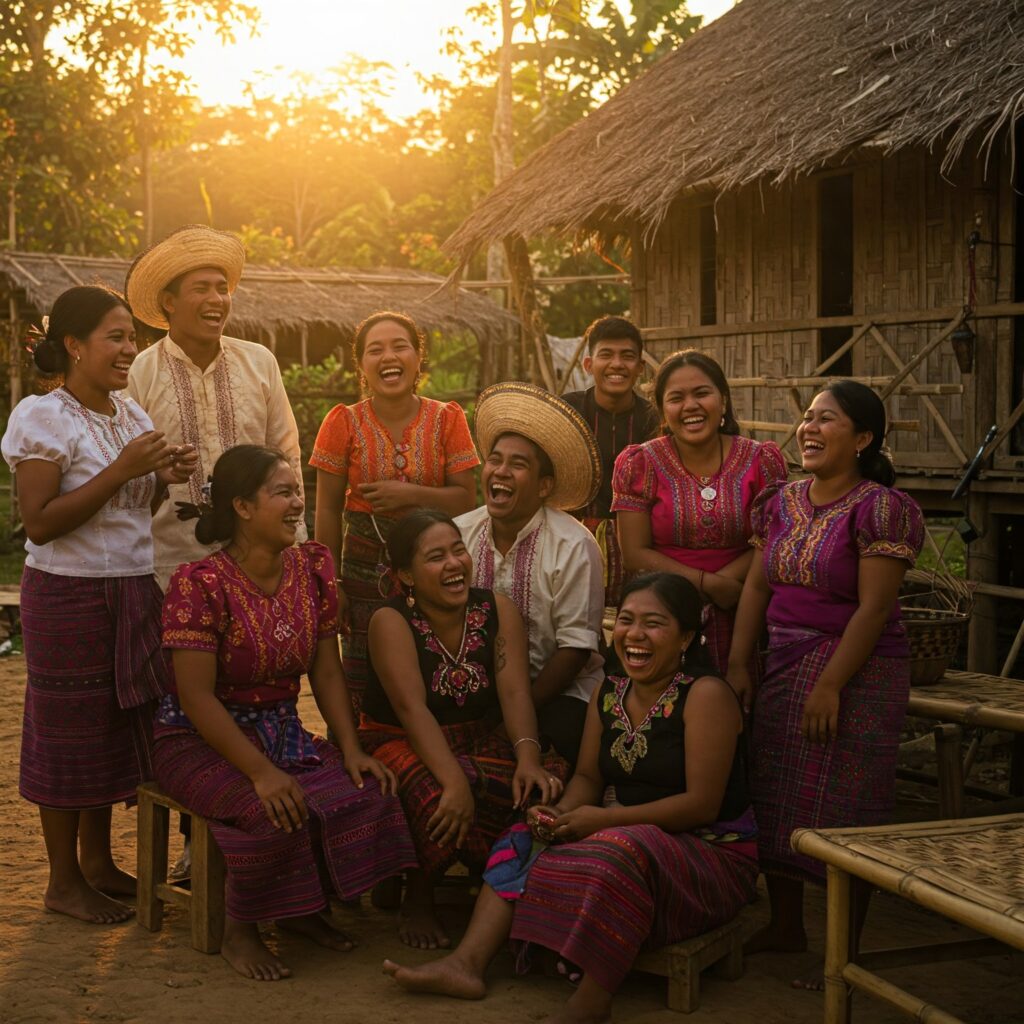The Philippines is a treasure trove of diverse cultures, languages, and traditions, but perhaps one of its most delightful aspects is the unique brand of humor found in the Visayas region. Bisaya humor, characterized by its witty wordplay, double entendres, and sometimes self-deprecating nature, offers a fascinating glimpse into the cultural psyche of the Visayan people. According to the Philippine Statistics Authority’s 2020 census, Cebuano (the primary Bisaya language) is spoken by approximately 21.17% of the Filipino population, making it the second most spoken language in the country after Tagalog. This widespread use has contributed to the rich tapestry of jokes, puns, and comedic expressions that have become synonymous with Bisaya culture.
The Roots of Bisaya Humor
The evolution of Bisaya humor is deeply intertwined with the region’s historical and cultural development. Scholars from the University of San Carlos Cebuano Studies Center have traced the origins of this distinctive comedic style to the pre-colonial era, where storytelling and verbal jousting were essential parts of community gatherings. The Spanish colonization period added another layer to this humor, as locals often used comedy as a form of subtle resistance and cultural preservation. This historical context has shaped the modern Bisaya sense of humor into something that combines ancient traditions with contemporary wit, creating a unique comedic identity that resonates with millions of Filipinos today.
Language Play and Double Meanings
The Art of Bisaya Wordplay
One of the most distinctive features of Bisaya humor is its clever use of language manipulation. The Cebuano language’s structure allows for multiple interpretations of words and phrases, creating opportunities for hilarious misunderstandings and intentional puns. A prime example is the famous “Sinugba na Manok” joke, where “sinugba” can mean either “grilled” or “already fought” (in cockfighting), leading to numerous comedic situations. The versatility of Bisaya words and their various contextual meanings has given rise to countless jokes that often leave Tagalog speakers puzzled while sending Visayans into fits of laughter.
Here’s a comparative look at some common Bisaya words with multiple meanings:
| Bisaya Word | Meaning 1 | Meaning 2 | Meaning 3 |
|---|---|---|---|
| Lain | Different | Bad/Wrong | Others |
| Uyab | Boyfriend/Girlfriend | To Court | To Sway |
| Lagot | Angry | Broken String | Trouble |
| Baba | Down | Chin | Carry |
| Tulog | Sleep | Pretend | Unaware |
Regional Variations and Local Flavors
Distinctive Provincial Humor
The Visayas region, comprising multiple provinces and islands, has developed distinct variations in its humor. According to research conducted by the National Commission for Culture and the Arts (NCCA), each major Visayan province has contributed its own unique twist to the region’s comedy landscape. Cebuano jokes often feature urban settings and modern situations, while Ilonggo humor tends to incorporate more rural elements and traditional cultural references. Waray humor from Samar and Leyte is known for its sharp wit and sometimes politically charged content.
Popular Themes in Bisaya Comedy
Cultural Commentary and Social Observations
Bisaya humor frequently tackles everyday situations with a distinctive twist. Based on a 2023 study by the University of the Philippines Visayas, the most common themes in Bisaya comedy include:
| Theme | Percentage | Common Elements |
|---|---|---|
| Family Life | 35% | In-laws, Sibling rivalry, Parent-child dynamics |
| Romance | 25% | Dating mishaps, Marriage, Long-distance relationships |
| Food | 20% | Local delicacies, Eating habits, Restaurant experiences |
| Work Life | 15% | Office politics, Customer service, Career challenges |
| Politics | 5% | Local governance, Social issues, Public figures |
The Impact of Social Media
Digital Evolution of Bisaya Humor
The rise of social media platforms has given Bisaya humor a broader stage. According to Meta’s 2023 Regional Content Report, Bisaya comedy content receives an average of 45% more engagement compared to other regional Filipino content. Popular Bisaya comedy pages on Facebook collectively reach over 10 million followers, demonstrating the widespread appeal of this distinctive brand of humor. This digital renaissance has led to the emergence of new forms of Bisaya comedy, including memes, short-form videos, and online comedy shows that blend traditional wordplay with contemporary references.
Preserving Through Laughter
The Cultural Significance
Beyond entertainment, Bisaya humor serves as a vital tool for cultural preservation. The Cebuano Studies Center reports that humorous content helps maintain language fluency among younger generations and overseas Filipinos. Through jokes and comedic storytelling, important cultural values, local wisdom, and traditional expressions are passed down in an engaging and memorable way. This aspect of Bisaya humor has made it an essential component of cultural education programs in various Visayan schools and communities.
Modern Applications and Future Perspectives
Contemporary Relevance and Evolution
Today’s Bisaya comedians and content creators are finding innovative ways to keep their humor relevant while maintaining its cultural essence. The Philippine Entertainment Portal’s 2023 survey indicates that 78% of Visayan youth actively engage with and create Bisaya comedy content online. This digital transformation has led to interesting fusion formats where traditional Bisaya wordplay meets modern internet culture, creating a unique blend that appeals to both older and younger generations.
Conclusion: The Universal Language of Laughter
Bisaya humor represents more than just a collection of jokes and funny stories – it’s a living testament to the creativity, resilience, and joy of the Visayan people. As this unique brand of comedy continues to evolve and reach new audiences through digital platforms, it maintains its core characteristics that have made it beloved for generations. The ability to find humor in everyday situations, clever wordplay, and cultural observations ensures that Bisaya humor will continue to bring laughter and unite people across linguistic and cultural boundaries.
Disclaimer: This article is based on available research data and cultural studies as of 2024. While every effort has been made to ensure accuracy, humor is inherently subjective and cultural interpretations may vary. Regional variations and personal experiences might differ from the general observations presented here. If you notice any inaccuracies or have additional insights to share, please contact our editorial team for verification and updates. Some statistical data may be subject to change as new studies emerge.




